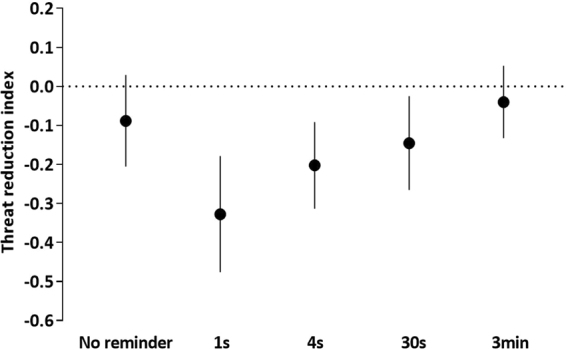Figure 4.

Short but not long reminder duration reduced stimulus discrimination from Day 1 to Day 3. Means with 95% confidence intervals in each group. Threat reduction index is the change in stimulus discrimination (CS+ minus CS−) from late acquisition to early re-extinction (Day 1 subtracted from Day 3). Confidence intervals that do not cross the vertical dashed line at zero indicate that the corresponding contrast is different from zero and thus statistically significant. The results show that on Day 3, the no-reminder and 3 min reminder groups expressed about the same level of threat discrimination acquired on Day 1 (threat reduction index around zero), whereas the 1 s, 4 s and 30 s reminder duration groups showed a significant reduction (negative threat reduction index) from acquisition to re-extinction. Note that in the 30 s reminder group (but not in the 1 s or 4 s reminder groups) stimulus discrimination remained significant despite this reduction.
